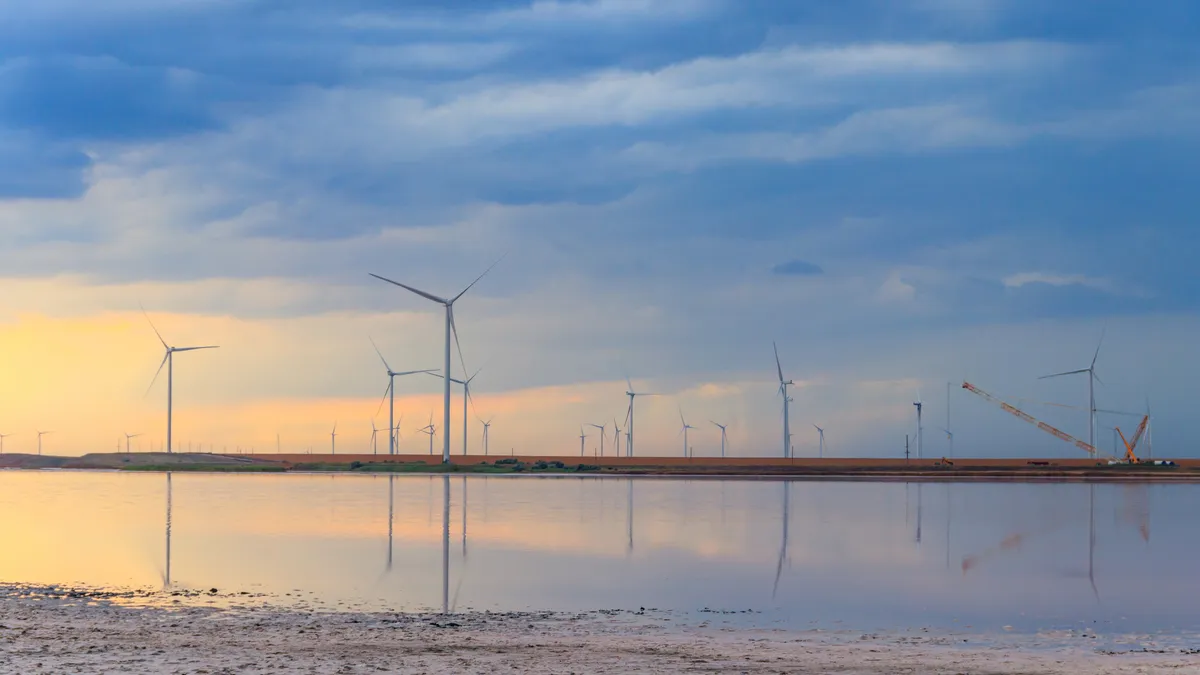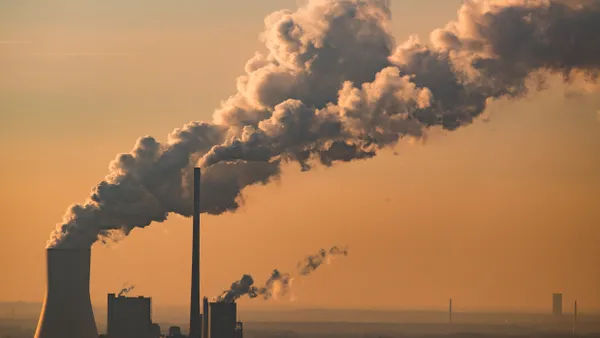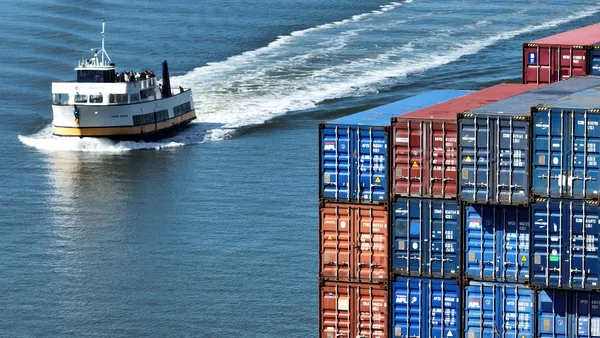Dive Brief:
- Morningstar launched the Low Carbon Transition Leaders indexes Wednesday, giving investors more access to data on how companies are working to adapt to a low-carbon economy, without excluding energy companies or other high-emitting sectors.
- The nine indexes have global, regional, developed, emerging and single country options that have portfolios composed of the top 50% of each sector's market cap. The companies are given equal weight for their current carbon intensity and their low carbon transition rating management score — forward-looking metrics developed by Morningstar Sustainalytics.
- “We think it really solves a key kind of market issue for investors that want to maintain lower active risk to the market by maintaining exposure to high carbon-intensive sectors, but doing it in a very different way,” Rob Edwards, global director of ESG product management for Morningstar Indexes, told ESG Dive.
Dive Insight:
The indexes will allow investors to target companies from every sector that are “taking the most action toward aligning with net-zero,” Morningstar said in a press release. Each index portfolio targets 11 sectors across three categories: The basic materials, consumer cyclical, financial services and real estate sectors are classified as cyclical; the communication services, energy, industrials and technology sectors are classified as sensitive; and the consumer defensive, healthcare and utilities sectors are categorized as defensive.
The LCTL indexes also give investors increased transparency and comparable data, Anya Solovieva, Sustainalytics’ director of global commercial strategy for climate solutions, told ESG Dive. Sustainalytics, a subsidiary of Morningstar, focuses on ESG research, ratings and analytics. Soloveiva said one of the biggest challenges for investors, in regards to the climate transition, has been understanding companies’ progression against their net-zero commitments and climate targets.
“Institutional investors were saying that … it is still challenging to fully understand the credibility of those commitments or targets … [and] understand what are the actions companies are taking today to give them confidence that the companies are on track to reduce emissions and of course, as a consequence, succeed in a low carbon economy,” Solovieva said.
In addition to a global index based on the methodology, Morningstar released regional LCTL indexes for the Asia-Pacific and Nordic regions, Japan and the United States. The developed and emerging markets indexes will have options to target all sectors in all developed markets, developed markets outside of North America, developed markets in Europe and emerging markets.
The indexes launched alongside a paper and case studies which further explain how the LCTL index methodology works.
The carbon intensity score will look at companies’ scope 1, scope 2 and scope 3, scaled by the size of a company, to give investors an “apples to apples footprint,” Edwards told ESG Dive. The carbon transition management score will try to evaluate the quality of companies’ programs, strategy, governance and financial position to inform “the likelihood that the issuers will anticipate risks and manage their emissions in line with expected government policies and market changes and net zero commitments,” the paper said.
The management score will look to evaluate companies’ operational readiness to implement their transition plans. Morningstar said when it looked at a universe of 8,000 companies with the Sustainalytics low carbon transition rating, as of the end of 2023, “paint[ed] a dire picture of the global economy’s carbon emissions trajectory,” according to the paper. The analysts said that those reviewed companies are on track for an implied global temperature rise of 3.1 degrees Celsius, if all companies were to overshoot their emissions budgets by the same proportion.
“This focus on assessing management actions is really key for investors,” Solovieva said. “To want to then narrow down universes or make investment decisions, you really need to understand what the company is actually doing to transition to a low carbon economy.”
The LCTL indexes’ two-pronged score allows for companies like French oil and gas “supermajor” TotalEnergies SE to be listed in the energy sector of its indexes, in the same portfolios that contain a global decarbonization leader like Ørsted, Denmark’s largest energy company, in its industrials sector.
The paper said TotalEnergies SE “might be a surprising inclusion in a low-carbon transition leaders index given its massive carbon footprint” and its current goal of reaching net-zero by 2050 “ is inadequate for a 1.5-degree world.” However, the analysts said the company has “taken concrete steps” towards net-zero. The analysts note the company has raised over 3 billion euros ($3.25 billion) for green bonds — focused on renewable energy purchasing and research into green hydrogen products — has begun accounting for carbon pricing in decision-making and internally strengthened its internal governance for climate.
Meanwhile Ørsted — which generates 70% of its energy from renewable sources and has decreased its emissions intensity from energy generation and operations by nearly 40% in the past three years — was also ordered by the Danish government to continue or resume operations in three of its coal and oil plants until June 2024. The analysts note this setback “may hamper” Ørsted’s goal of carbon neutrality by 2025.
“I think a lot of investors understand that supporting [higher-emitting] industries, investing in them, helping them develop into lower carbon and aligning to net zero is at a very crucial point,” Edwards said.












